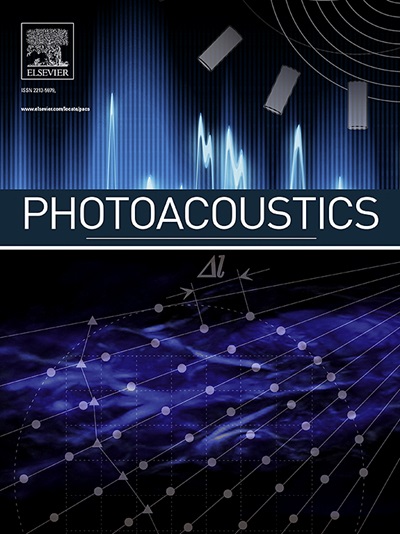Rapid synergistic thrombolysis of ischemic stroke guided by high-resolution and high-speed photoacoustic cerebrovascular imaging
IF 7.1
1区 医学
Q1 ENGINEERING, BIOMEDICAL
引用次数: 0
Abstract
Thrombosis is the major cause of ischemic stroke and poses a serious health burden globally. Current thrombolytic strategies, such as systematic administration of recombinant human tissue plasminogen activator (rt-PA), are challenged by limited thrombolysis efficiency due to low targeting ability and a short plasma half-life. Here, we report a rapid synergistic strategy that integrates sonothrombolysis and rt-PA mediated pharmacological thrombolysis to achieve accurate and efficient treatment of ischemic stroke. The strategy (PLPA@PFP) uses a platelet-biomimetic membrane as a carrier to deliver both perfluoropentane (PFP) and rt-PA, prolonging half-life and effectively accumulating at the thrombus within 0.5 hours. Upon exposure to focused ultrasound, PFP-based cavitation effects significantly enhance thrombus breakdown and rt-PA penetration, enabling synergistic sono/pharmacological thrombolysis both in vitro and in vivo. High-resolution photoacoustic (PA) imaging provides direct assessment of vascular reperfusion following therapeutic intervention in a murine model of ischemic stroke, offering important guidance for clinical treatment.
高分辨率、高速光声脑血管成像引导下缺血性脑卒中快速协同溶栓
血栓形成是缺血性中风的主要原因,在全球造成严重的健康负担。目前的溶栓策略,如系统给药重组人组织纤溶酶原激活剂(rt-PA),由于靶向能力低和血浆半衰期短,溶栓效率有限,受到挑战。在这里,我们报道了一种快速协同策略,将超声溶栓和rt-PA介导的药物溶栓结合起来,以实现准确有效的缺血性卒中治疗。该策略(PLPA@PFP)使用血小板仿生膜作为载体,递送全氟戊烷(PFP)和rt-PA,延长半衰期,并在0.5 小时内有效地积聚在血栓上。暴露于聚焦超声后,基于pff的空化效应显著增强血栓破裂和rt-PA穿透,实现体外和体内超声/药物协同溶栓。高分辨率光声成像(PA)可直接评估小鼠缺血性脑卒中模型治疗干预后的血管再灌注情况,为临床治疗提供重要指导。
本文章由计算机程序翻译,如有差异,请以英文原文为准。
求助全文
约1分钟内获得全文
求助全文
来源期刊

Photoacoustics
Physics and Astronomy-Atomic and Molecular Physics, and Optics
CiteScore
11.40
自引率
16.50%
发文量
96
审稿时长
53 days
期刊介绍:
The open access Photoacoustics journal (PACS) aims to publish original research and review contributions in the field of photoacoustics-optoacoustics-thermoacoustics. This field utilizes acoustical and ultrasonic phenomena excited by electromagnetic radiation for the detection, visualization, and characterization of various materials and biological tissues, including living organisms.
Recent advancements in laser technologies, ultrasound detection approaches, inverse theory, and fast reconstruction algorithms have greatly supported the rapid progress in this field. The unique contrast provided by molecular absorption in photoacoustic-optoacoustic-thermoacoustic methods has allowed for addressing unmet biological and medical needs such as pre-clinical research, clinical imaging of vasculature, tissue and disease physiology, drug efficacy, surgery guidance, and therapy monitoring.
Applications of this field encompass a wide range of medical imaging and sensing applications, including cancer, vascular diseases, brain neurophysiology, ophthalmology, and diabetes. Moreover, photoacoustics-optoacoustics-thermoacoustics is a multidisciplinary field, with contributions from chemistry and nanotechnology, where novel materials such as biodegradable nanoparticles, organic dyes, targeted agents, theranostic probes, and genetically expressed markers are being actively developed.
These advanced materials have significantly improved the signal-to-noise ratio and tissue contrast in photoacoustic methods.
 求助内容:
求助内容: 应助结果提醒方式:
应助结果提醒方式:


